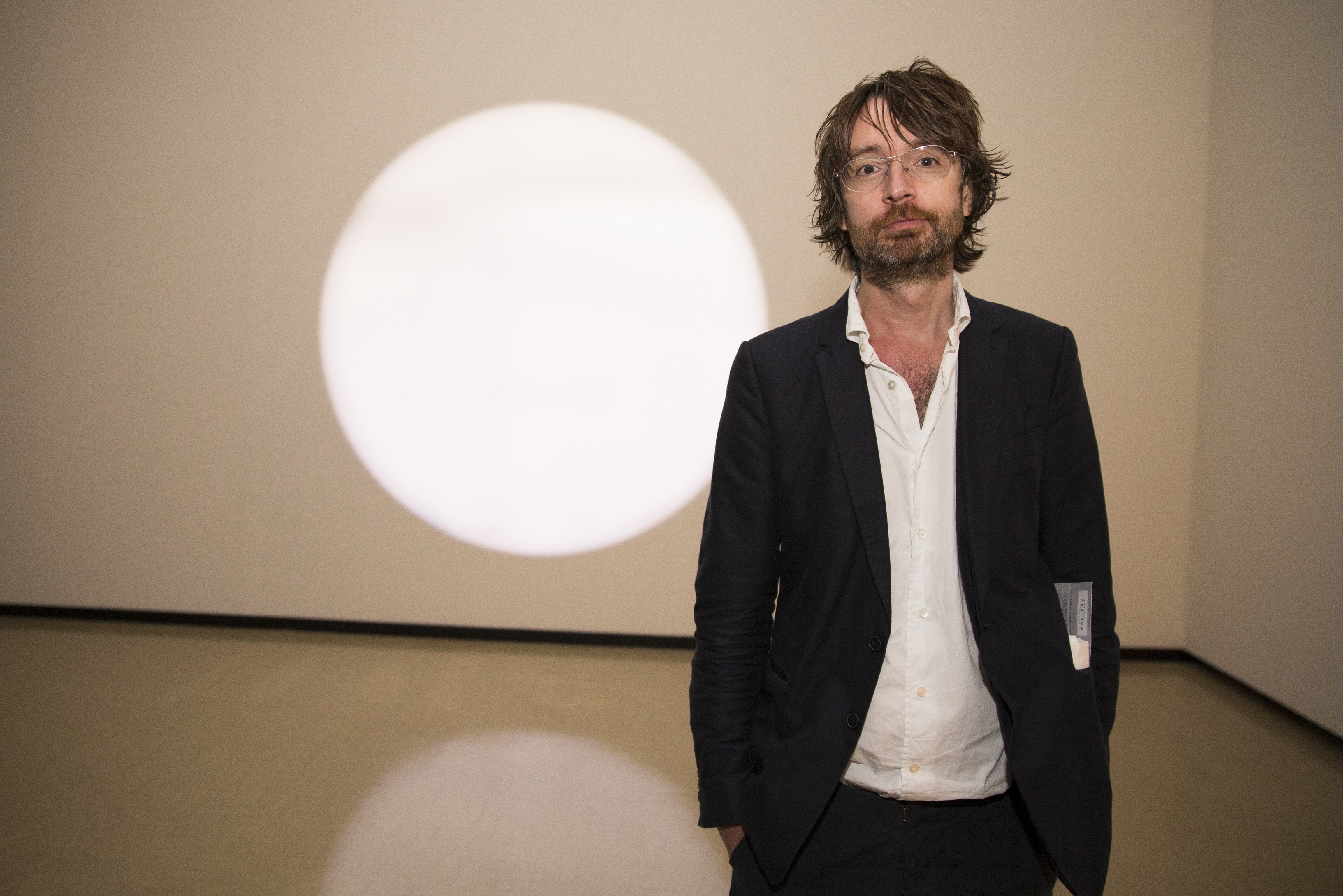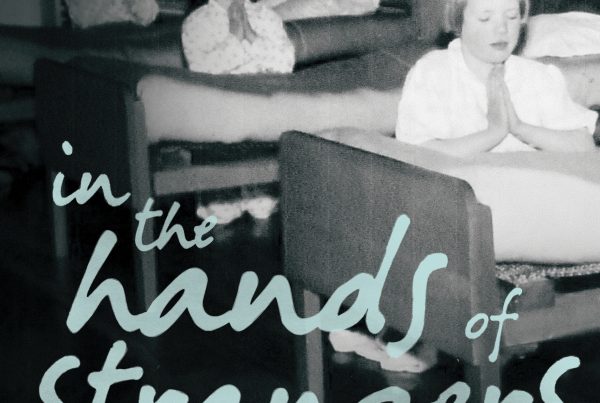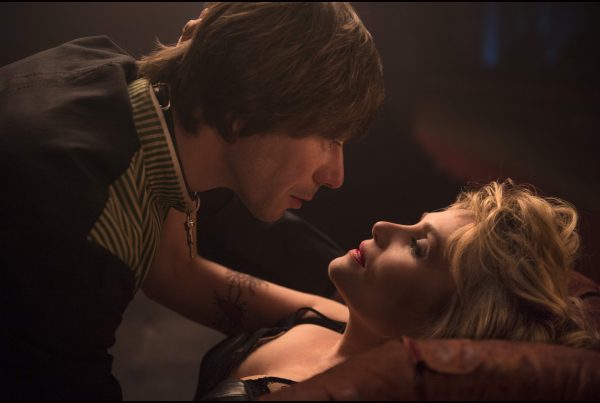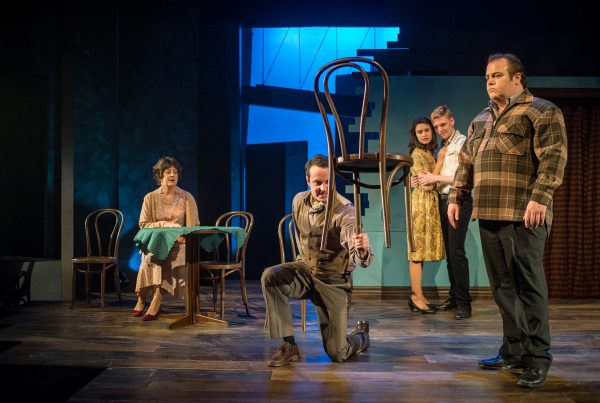
Lucy was a good sport and looked at everything with me, but both of us struggled to make sense of what exactly we were looking at. Curator Robert Leonard’s essay in the catalogue sums it up with its title, “Please explain”.
There were a couple of works that we enjoyed for the sheer pleasure of their object-ness — Wilhelm Noacke oHG (2006) and Three White Desks (2008–09). Wilhelm Noacke oHG (2006) is a projector in the shape of a spiral stairwell that plays only one thing: Starling’s film history of the eponymous German metal fabricator firm, which had connections to the Bauhaus, international modernism and — strange to put it in the same sentence — the Third Reich. Archival photographs and footage from the workshop document the engineering company, which built the projector. It’s a self-referential business.
Three White Desks (2008–09), on the other hand, references one of those sidebar art histories. The main characters in this story are Francis Bacon and Patrick White. You’ll have to visit the show to read how it goes, but suffice it to say, the desks are stunning.
Back in Wellington with the benefit of attending Starling’s slightly daffy artist’s talk, I looked at the exhibition more closely at City Gallery and watched the two 30-minute films — Project for a Masquerade (Hiroshima) (2010) and Black Drop (2012). Set in a 35mm editing suite, the latter tells a science story proposing that 19th-century astronomers and photographers trying to capture the transit of Venus invented cinema. There are plenty of ins and outs, of course, but it’s a good story.
Project for a Masquerade (Hiroshima), on the other hand, is a true story obfuscated by a fiction. It lays a real-life James Bond-style art story over the characters of traditional Japanese Noh play. What you see as a viewer is a man carving the character masks for the play — one each for James Bond, Colonel Sanders, Enrico Fermi, Joseph Hirshhorn, Henry Moore and Anthony Blunt. So what begins as a story about Henry Moore’s Nuclear Energy/Atom Piece (1942) turns into an exercise of masking and obscuring. It’s all deeply curious.
Starling’s works are built from the story up — and these stories are based on research, the process of making the work, and the relationships involved in both of these endeavours. They often highlight the present-ness of history. But the artist also favours certain stories with a ‘Boy’s Own’ feel of exploration and discovery. In Speculum provides some of the stories of Starling’s recent adventures with art and history in the Antipodes and runs at the City Gallery until 18 May.
May Art
Meridian Lines: Contemporary Art from Te Papa is on at Pataka in Porirua until 25 May. It was curated for the opening of the refurbished China Art Museum in Shanghai last year and features work by Bill Hammond, Ralph Hotere, Ani O’Neill, Michael Parekowhai, John Pule, Yuk King Tan and Gordon Walters. It includes one of my favourite works by Yuk King Tan, Untitled (Red Masks) (1998). Another must-see is Shigeyuki Kihara’s Where do we come from? What are we? Where are we going?, a series of stunning black and white photographs, also on show at Pataka until 25 May.[/info]





